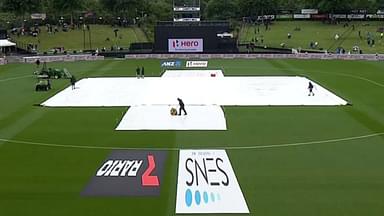Ferrari have been brilliant with the updates that they have brought to races(except the last two ones). Mercedes have largely gone unchallenged in the last 4 years, but Ferrari have stepped up their game this time round, having the better car for a large part of the ongoing season.
Their advantage has come down a notch since Singapore, but nevertheless, they have been able to match Mercedes in terms of qualifying and race pace.
A lot of it has to do with the race starts and that secret button in the Ferrari that helps both Vettel and Raikkonen to get off to flyers on race day.
Now, according to GetMotorsport, Ferrari had been using a special button in order to trigger a better start.
Complete explanation here(thanks to GetMotorsport):
Ferrari had been experiencing unusually competitive race starts for several races (Hockenheim, Silverstone) before Sky F1s Anthony Davidson spotted both Ferrari drivers holding an “invisible” button while waiting for the lights to go out. Immediately after this was broadcast, Ferrari seemed to lose their advantage off of the line.
So what is this button and what does it do?
Davidson posited that the button may have a role in clutch release off the start however the Ferrari is fitted with a clutch paddle on the steering wheel, the rules on clutch actuation cover dual methods of actuation.
“9.2.1 If multiple clutch operating devices are used, they must all have the same mechanical travel characteristics and be mapped identically.”
It can also be seen in the video link that Vettel briefly removes his thumb from the button then places it back onto the button while waiting for the lights to go out and the car does not move. So if it is not the clutch then what else could it be?
While waiting on the start line at part throttle, the engine is spinning quite quickly but under very little load, i.e there is relatively little air flowing into the engine and combustion gases exiting the engine into the turbocharger. This will have the result of a slow turbocharger speed and low boost pressure immediately after the clutch is disengaged.
The MGU K cannot legally provide assistance until the car reaches 100kph and so the initial launch is completely dependant on the power transmitted from the internal combustion engine. Up until the car is traction limited, an increase in boost pressure will result in an improved race start.
There are no rules explicitly preventing a team installing a button allowing the driver to manually activate the MGU-H and spin the turbo up to a working speed. Holding such a button until the lights go out would result in zero turbo lag and instantaneous maximum boost pressure.
Of course, if you were fitting a button to the steering wheel which is only used two or three times per race, provides a performance advantage off the start line and you didn’t particularly want your competitors to know you were doing such a thing it would make sense to install it underneath the steering wheel grip to create a barely perceptible lump.
Until an eagle eyed pundit spots it.
A few reddit users too discussed about the issue, as the button helped Ferrari get a drivetrain at race starts.
“That button is much more sophisticated. Rumor has it that Ferrari has a secret substance abort their cars. That substance is allegedly highly flamable when mixed with air. Scientists assume that some kind of oxidation is in play.
“Now apparently they infuse some small amount of that substance into a cylindrical metal object. Inside that cylinder another object can move freely up and down.
“Apparently they can ignite the substance-air-mixture and the following expansion drives that second object upwards. GPS data indicates that Ferrari can somehow use that upwards momentum to push the car forward, although some teams are questioning the legality of that “drivetrain”.” r/choeger said.
Do you think such a thing is possible?
Check out the video:
<
div style=”width: 100%; height: 0px; position: relative; padding-bottom: 56.250%;”>






